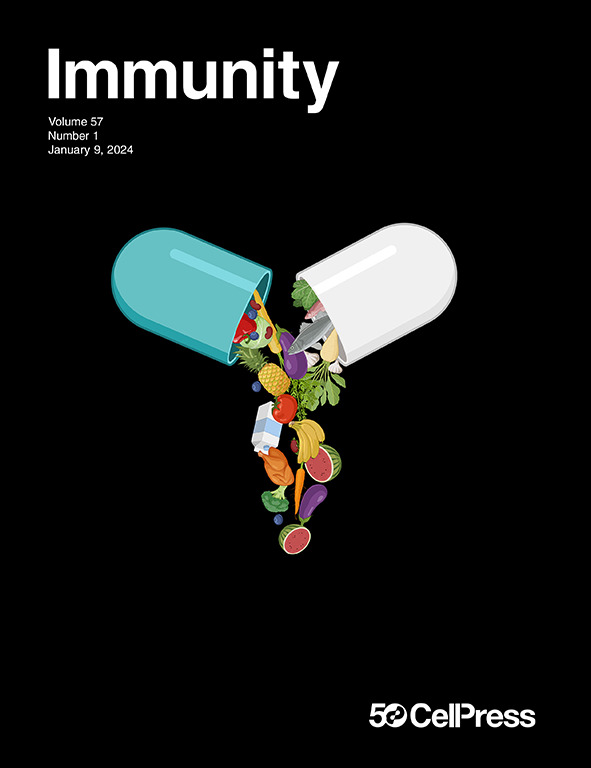Gasdermin-D-mediated epithelial-immune circuit synchronizes nutrient absorption and host defense in the small intestine
IF 25.5
1区 医学
Q1 IMMUNOLOGY
引用次数: 0
Abstract
The small intestine (SI) absorbs nutrients and acts as a barrier against pathogens. Diet enables the absorptive function of the SI while maintaining immune homeostasis. But how the SI transmits nutritional signals to the immune response and adapts to dietary intake remains unclear. Here, we demonstrated that epithelial gasdermin D (GSDMD) in the SI facilitated the absorptive function of enterocytes, subsequently empowering an epithelial-immune cooperation to modulate host defense. Unlike its pyroptotic function, GSDMD determines the absorptive versus the defensive zonation of enterocytes and promotes brush border assembly. This diet-induced, GSDMD-mediated adaptation promoted lipid absorption and subsequently rewired enterocyte metabolism to support intraepithelial γδ T lymphocytes (γδ T-IELs), thereby enhancing barrier function. Impairment of this GSDMD-mediated circuit exacerbated barrier-dysfunction-associated enteritis. Our results reveal how epithelial cells and lymphocytes co-adapt to nutrient signals in the SI, thereby adjusting the equilibrium between nutrient uptake and host defense in response to environmental change.

在小肠中,气泌素- d介导的上皮免疫回路同步营养吸收和宿主防御
小肠(SI)吸收营养物质并作为抵抗病原体的屏障。饮食在维持免疫稳态的同时,使SI具有吸收功能。但SI如何将营养信号传递给免疫反应并适应饮食摄入仍不清楚。在这里,我们证明了SI中的上皮性气真皮蛋白D (GSDMD)促进了肠细胞的吸收功能,随后增强了上皮-免疫合作来调节宿主防御。与其热噬功能不同,GSDMD决定肠细胞的吸收与防御分区,并促进刷状边界组装。这种饮食诱导的、gsdmd介导的适应促进了脂质吸收,随后重新连接肠细胞代谢,以支持上皮内γδ T淋巴细胞(γδ T- iel),从而增强屏障功能。这种gsdmd介导的电路的损伤加重了屏障功能障碍相关的肠炎。我们的研究结果揭示了上皮细胞和淋巴细胞如何共同适应SI中的营养信号,从而调节营养摄取和宿主防御之间的平衡,以应对环境变化。
本文章由计算机程序翻译,如有差异,请以英文原文为准。
求助全文
约1分钟内获得全文
求助全文
来源期刊

Immunity
医学-免疫学
CiteScore
49.40
自引率
2.20%
发文量
205
审稿时长
6 months
期刊介绍:
Immunity is a publication that focuses on publishing significant advancements in research related to immunology. We encourage the submission of studies that offer groundbreaking immunological discoveries, whether at the molecular, cellular, or whole organism level. Topics of interest encompass a wide range, such as cancer, infectious diseases, neuroimmunology, autoimmune diseases, allergies, mucosal immunity, metabolic diseases, and homeostasis.
 求助内容:
求助内容: 应助结果提醒方式:
应助结果提醒方式:


